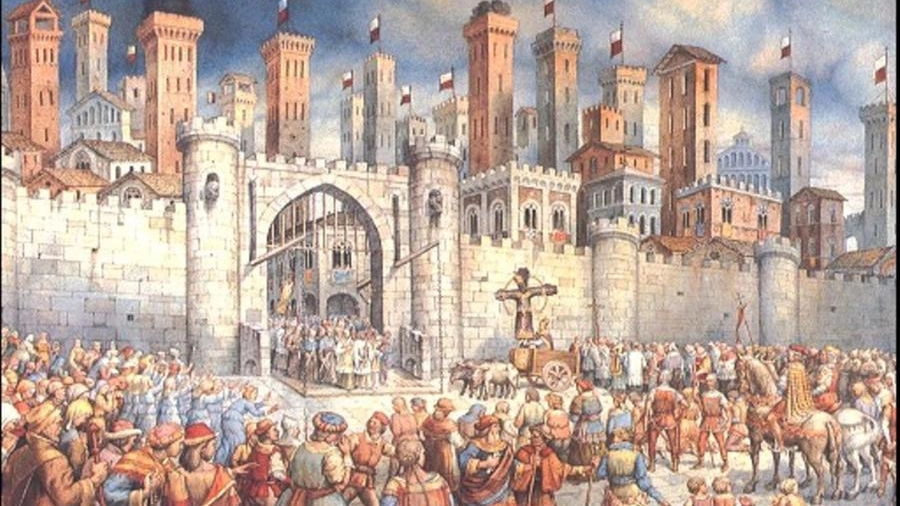
Every year, on the night of September 13th, people from Lucca march from the Basilica of San Frediano to Lucca’s Cathedral. The path is not a random one: it was decided by a wooden crucifix, known as the Volto Santo (Holy Face).
The story of this beautiful statue is shrouded in mystery. It dates back to 782 AD, when it arrived in Luni (a municipality in Liguria) on an unmanned ship, along with some other relics.
According to the legend, the statue was carved by Nicodemus after the resurrection of Christ, all but its face, which was completed by an angel while Nicodemus slept.
When the crucifix landed in Luni, it found Lucca’s bishop, Giovanni I, waiting for it on shore. He had been forewarned about the Volto Santo’s arrival in his dreams.
The crucifix thus became a point of contention between the two cities, Luni and Lucca, so it was decided that God should guide its destination. It was put on a driverless cart pulled by two oxen, and the oxen took the road to Lucca, where the statue has remained ever since.
Lucca’s people warmly welcomed the crucifix and decided to put it in the Basilica of San Frediano. But then the unexpected took place.
The morning following its arrival in Lucca, the Volto Santo disappeared from San Frediano. It was found near the church that is today Lucca’s Cathedral, as if it had decided by itself where its shelter would be.
The crucifix has been associated with many miracles, and is often the halfway destination of pilgrims who travel the Via Francigena from Rome to Canterbury.
Today, Lucca celebrates the Volto Santo’s journey with the Festa di Santa Croce, a religious and cultural festival entirely devoted to it. It consists of a special mass in Lucca’s Cathedral on September 14th, and a candlelit procession, called the Luminara, on the night before.
Priests, bishops, townspeople, community leaders, and voluntary associations, all travel along the Volto Santo’s path. The whole town is decorated with small candles all around the windows and doors, and the atmosphere is filled with drums, brass bands, liturgical music, archers and medieval costumes. Be it legend or history, the reader and the faithful may judge. But Santa Croce surely brings along some kind of magic.

